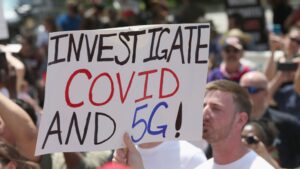
In the digital age, conspiracy theories have gained unprecedented traction, especially those involving governments. With a constant stream of information and misinformation circulating online, it’s crucial to distinguish between what is real and what is not. In 2024, examining these theories helps us understand their origins, their impact on public perception, and the truth behind them.
The Rise of Theories Theories
Conspiracy theories have always existed, but the internet has amplified their reach. Social media platforms, forums, and blogs have become breeding grounds for theories that challenge official narratives. This proliferation has led to increased scrutiny of government actions, spurring both legitimate questions and unfounded speculations.
Key Government Conspiracy Theories
- The Deep State: One of the most talked-about conspiracy theories is the existence of a “deep state” – a secret network within the government that manipulates policy and controls political outcomes behind the scenes. Proponents argue that this shadowy group operates independently of elected officials and has its own agenda. However, evidence supporting the deep state theory remains largely anecdotal and lacks concrete proof. Most experts consider it a blend of misunderstanding and mistrust towards government institutions.
- Surveillance State: With advances in technology, concerns about government surveillance have escalated. The theory posits that governments are extensively monitoring citizens’ digital communications and activities. While it’s true that governments engage in surveillance for security reasons, the extent of this monitoring is often exaggerated in conspiracy theories. Legal frameworks and oversight mechanisms are in place in many democracies to prevent misuse, though abuses can and do occur.
- False Flag Operations: Another prevalent theory is that governments stage false flag operations – covert actions intended to appear as though they were conducted by other entities. These are alleged to be used to justify military actions or suppress dissent. Historical examples, like Operation Northwoods, provide some basis for these fears, but many modern claims lack credible evidence and are often used to explain complex events with simplified narratives.
- COVID-19 Origins and Control: The COVID-19 pandemic has been a hotbed for conspiracy theories, including claims that the virus was artificially created and deliberately released. While some theories suggest intentionality, scientific consensus supports that COVID-19 is a natural virus. Conspiracy theories about vaccines and government responses also persist, often fueled by misinformation and distrust.
Evaluating the Evidence
When investigating government conspiracy theories, it’s essential to evaluate the evidence critically:
- Source Credibility: Reliable information typically comes from established news outlets, academic research, or official statements. Unverified sources or anonymous accounts should be approached with caution.
- Corroboration: Look for multiple, independent sources that corroborate the same information. Consistent reports from various credible sources are more likely to be accurate.
- Expert Opinions: Consulting experts in relevant fields can provide insight into complex topics. For instance, in the case of COVID-19, virologists and epidemiologists offer the most accurate information regarding the virus’s origins and spread.
- Logical Consistency: Assess whether the theory logically fits with known facts and evidence. Conspiracy theories often rely on complex explanations for simple phenomena, which can be a red flag.
Impact on Society
Government conspiracy theories can have significant societal impacts:
- Erosion of Trust: Persistent theories undermine public trust in institutions and officials, leading to decreased confidence in government and democratic processes.
- Polarization: These theories often contribute to political and social polarization, creating divisions based on differing beliefs about government actions and intentions.
- Public Behavior: Belief in conspiracy theories can influence public behavior, such as vaccine hesitancy or resistance to government measures, which can have broader health and safety implications.
Conclusion
In 2024, the landscape of government conspiracy theories is as dynamic as ever. While skepticism towards government actions is healthy in a democracy, it is crucial to differentiate between well-supported concerns and unfounded speculations. By critically evaluating sources and evidence, individuals can better navigate the complex world of conspiracy theories and make informed judgments about what’s real and what’s not.


